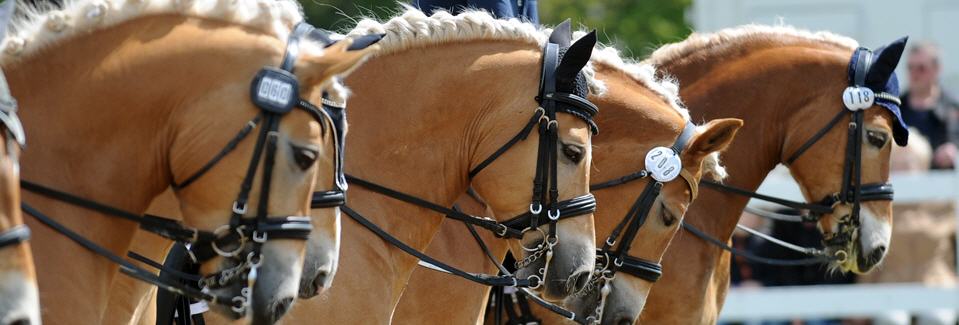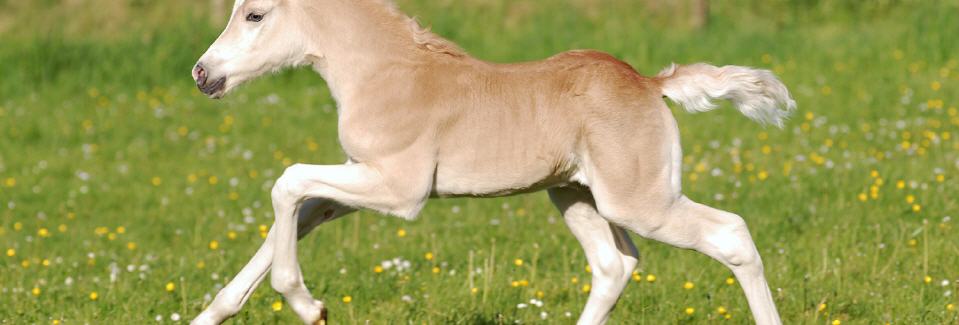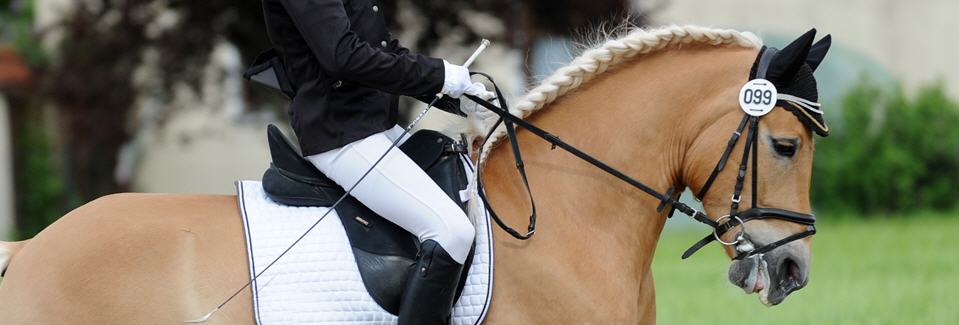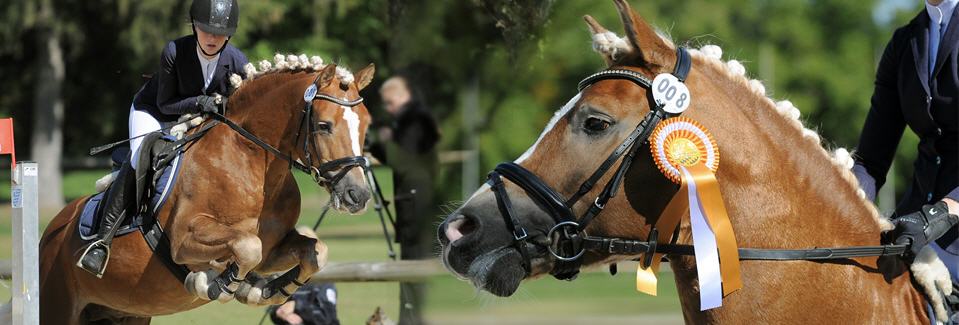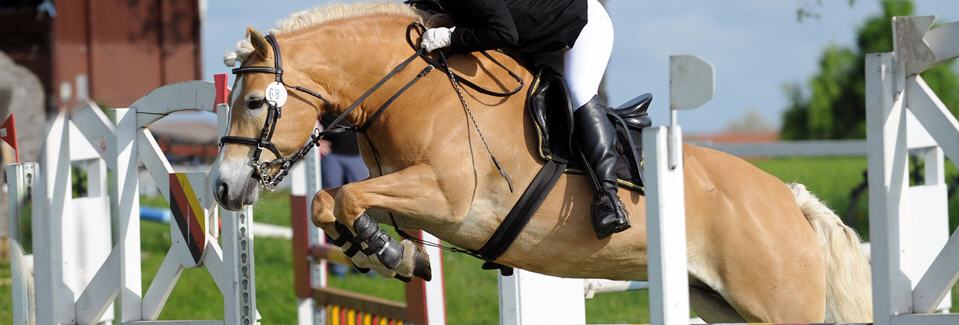Englisch
Haflingers, like all horses, are products of their heritage, their bloodline, and their environment. It is no wonder than that the Arabian stallion "El Bedavi", born in 1868, and his son "249 Folie", born in 1874, have impressed their oriental stamp upon the emergence of this race. The inner qualities and the outer appearance of the Haflinger were further influenced by the harsh existential conditions of the southern tirolian mountains.
An acclimized pack-horse that could adapt to the regional conditions was needed as a loyal helper of the mountain farmers and also for military service in the mountains at times of war. The hard work as a pack and draft animal, the meagre maintenance and feeding conditions, as well as the frequent changes in weather and temperature in the mountains eventually formed a natural art of selection.
These were the decisive factors for those steadfast characteristics that are still today found in the Haflinger: beauty, durability, health, fecundity, modesty, good-naturedness, and a high degree of adaptability. When at the beginning of the 60's the call for a small horse, which could be used for riding as well as for driving, became laudible, the process of change in the breeding criteria of the Haflinger to an all-round leisure horse set in, whereby the typical characteristics of this race were to be maintained.
In contrast to the many other horse races, the changes in the breeding goals of the Haflinger - from pack-horse to an economical as well as universal leisure horse - could be achieved in a relatively short time, thanks to its multifarious genetical structure.
THE GOAL OF BREEDING AND ITS STATUS
The characteristics of the modern German Haflinger, its striking gold color with white fetlock, combined with nobility and elegance as well as improved riding qualities, have granted this loveable horse race its renowned trademark "Born in Germany". A consistent selectioning on the basis of performance tests have created a Haflinger today which predestines it to being a leisure and sports horse as well.
The constant increase in leisure time, a change in the conditions of agricultural production and the expanding significance the role of nature plays have contributed to the fact that the Haflinger represents the longest small horse population in Germany by 40%.
After years of experience of well-established breeder generations and due to the continual efforts of strict breeding policies, the emphasis of quality in breeding has increased.
Germany looks with pride on the Haflinger stud-farm Meura in the Thueringen Forest, which has made a name for itself as Europe's largest Haflinger stud-farm for mare performance tests.
Uniformity in the performance criteria for stallions and mares could recently be settled and achieved through the initiative of the AGH (Collaboration of Haflinger Breeders and Holders). The results of the 50-day-test for stallions held at one of the three central performance stations (Muenster-Handorf, Munich-Riem, Moritzburg) are a decisive factor in the selectioning of stallions as potential breeding candidates. In addition to assessing the criteria regarding character and sociability, as well as the willingness and capacity to perform, special attention is given to the rideability and driving ability of the Haflinger horse in order to meet the demands for a versatile leisure horse.
In this way the high demands placed on a leisure partner by aficionados of the Haflinger horse to be used in all areas of interest can be fulfilled.
UPBRINGING AND MAINTENANCE
Having their domestic origins in the mountains, the Haflinger feels at home in all regions of Germany. From the Bavarian Alps up to the northern German flatlands or in the typical German highlands, the Haflinger is acclimatized anywhere.
An advancement in the breeding criteria of Haflingers as well as in their upbringing and maintenance is guaranteed not only due to the indigenous rural farms but also to the many enthusiastic devotees of Haflinger horses.
The Haflinger's pronounced social behavior, characterized by a harmonious and genial nature, is the prize with which the Haflinger-lover is rewarded and the result of keeping and raising the animals in groups, in herds, or in open stalls.
Abel Unmuessig demonstrated with his horse and carriage team the outstanding qualities of the German Haflinger: obedience, the willingness to perform, and reliability.
EVENTING AND LEISURE TIME
The Haflinger is a noble, modest small horse with much charm, sufficiently extended neck, defined withers, a long, oval strip, a correct foundation, as well as flat extending movements. Obligatory is the gold coloring of the coat, white to flaxen-colored fetlock, and little to no leg-markings.
On account of its placid temperament, the Haflinger is a very suitable horse for riding and driving for both adults and children, but can be increasingly seen in sporting events, such as dressage even up to higher classes and jumping as well. Considerable success could be accounted for in the past few years especially in driving events, which is reflected in the high winning profits.
In the focal point are the four-in-hand drivers Detlef Randizio (Wipperfuerth) and Abel Unmuessig (Hinterzarten), who in the meantime have been nominated to join the federal cadre of four-in-hand pony or small horse drivers. Abel Unmuessig was a member of the most successful German team in the European Championships held in Breda, Holland. Detlef Randizio also placed well in Breda and with his German Haflingers was the outstanding winner of the four-in-hand competition at the International Haflinger Tournament in Ebbs, Austria, in 1996.
These triumphs are the best publicity and account for the success of the German breeding region and its exceptional reputation throughout the world.
Its versatility and willingness to learn and perform has promoted the Haflinger to become an all-round companion amongst leisure horses. In addition, a change of saddle will find them equally at home in western pleasure.
SUCCESSFUL SALES WORLDWIDE
The marked increase in foreign demand for German Haflingers amidst international competition has made evident its high breeding status.
Quality bred horses, for instance from the states Rheinland, Westfalia, and Hessen, have made the long trip to Canada and the USA. One can in the meantime be fascinated by Haflingers from Germany even in Japan.
The continual rigorous selectioning complemented w ith the high standards of the performance tests will in the future also allow for further good marketing possiblities for the Haflinger with the desirable trademark "Born in Germany".
The national flag illustrations clearly exhibit the international business relationships of the German Haflinger.
Imprint:
Published by the AGH (Collaboration of Haflinger Breeders and Holders of Germany)
Translation from German: Louisa Krause
